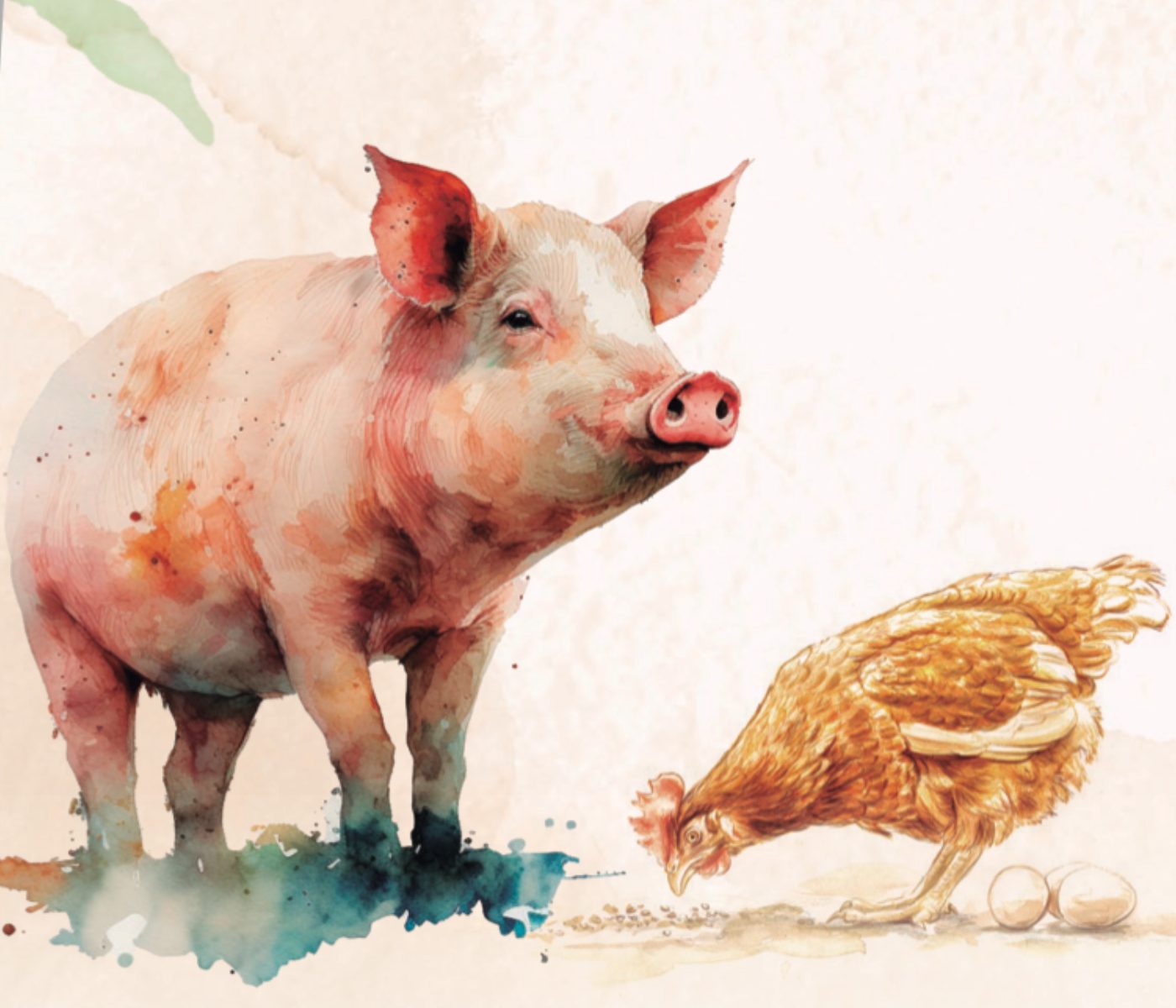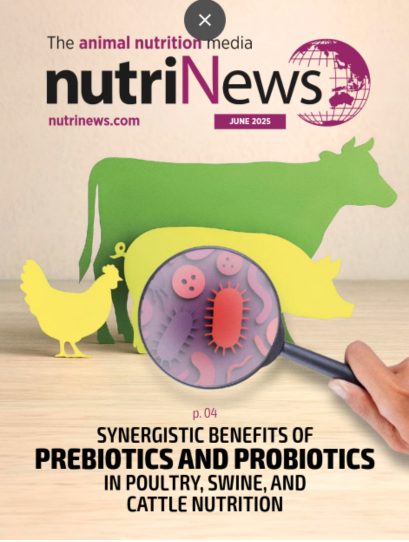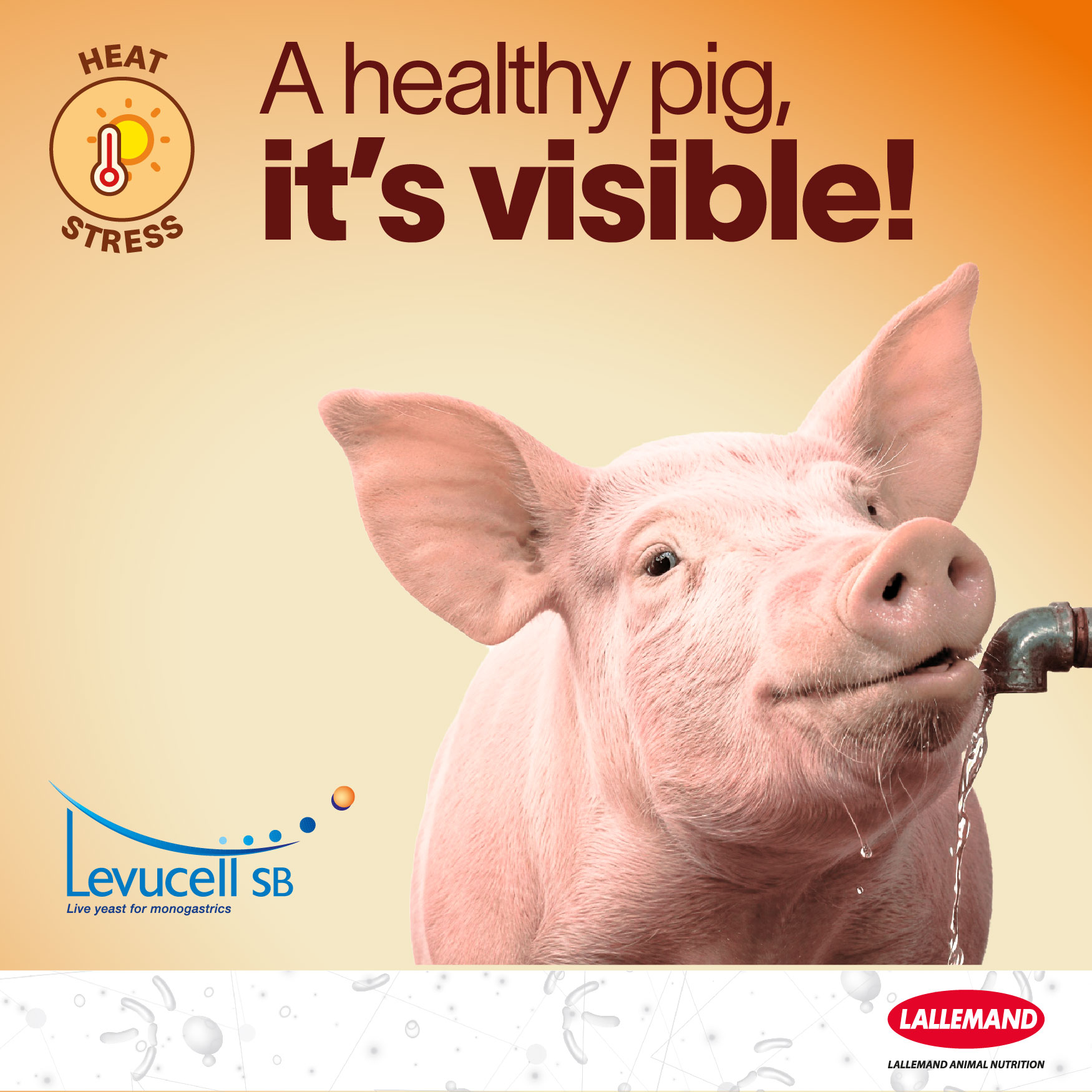On a global scale, according to the USDA (2024), the United States leads the ranking in sorghum (Sorghum bicolor L. Moench) production with 8,071 million tons, followed by Nigeria and Sudan. 
Originating from Africa, sorghum is recognized for its nutritional properties, standing out for its remarkable adaptability to adverse climatic and soil conditions, greater tolerance to water stress, high energy value, and versatility as an ingredient in the feeding of production animals (Nunes, 2005; Carvalho, 2010).
However, its inclusion requires careful analysis of variations in its composition, especially in relation to the high levels of tannins and antinutritional factors, which can negatively impact digestibility and animal performance (Selle et al., 2018).
 In nutritional terms, it is recommended to use 30% sorghum in diets for broiler chickens during the initial phase and laying hens, and 35% sorghum in diets for pigs during the finishing phase.
In nutritional terms, it is recommended to use 30% sorghum in diets for broiler chickens during the initial phase and laying hens, and 35% sorghum in diets for pigs during the finishing phase.
Morphological Characteristics and Composition of Sorghum Grain
There are various varieties of sorghum, such as forage sorghum, sweet sorghum, broomcorn, biomass sorghum, and grain sorghum, which are used to feed monogastric animals.
Grain sorghum is a type of low-growing sorghum that produces a panicle at the upper end, where the grains are located. Grain sorghum cultivars differ in terms of grain yield, disease tolerance, vegetative cycle, and other agronomic characteristics (Melo et al., 2023)
Sorghum grains come in a wide range of colors, with the most common being white, bronze, and gray. While the grains are generally spherical, their size and shape can vary (Nunes, 2000).
![]()
The grain consists of three main parts: the pericarp, the endosperm, and the germ (Figure 1). The relative proportion of these components in the grain varies, but in most cases, it is 6%, 84%, and 10%, respectively (Pereira Filho and Rodrigues, 2015).
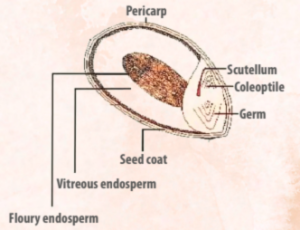
Figure 1: Structure of the sorghum grain.
Source: Adapted from Nunes (2000).
The pericarp is composed of three layers: the epicarp, mesocarp, and endocarp, with the tegument located just beneath, where the tannins are found. The germ consists of two tissues, the caulicle and the scutellum, which contain lipids, proteins, enzymes, and minerals. Approximately 88% of the starch granules and 80% of the proteins are located in the endosperm, which is floury and vitreous (Scramin, 2013; Pereira Filho and Rodrigues, 2015). Additionally, starch granules are also deposited in the mesocarp, explaining the high starch content of this cereal (Nunes, 2000). Sorghum is a cereal similar to corn, although there are differences in their nutritional profiles (Gomes, 2020). This cereal exhibits considerable genetic variability and in its nutritional composition, as shown in Table 1.
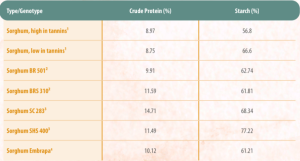
Table 1. Content of crude protein and starch in different sorghum grains.
As an energy cereal, the starch content in sorghum makes up the largest portion of the grain, with 70-80% consisting of amylopectin chains and 20-30% made up of amylose chains. On average, sorghum contains 3% ether extract, 12% fiber, and 78% total digestible nutrients (Martino et al., 2012; Pereira Filho and Rodrigues, 2015).
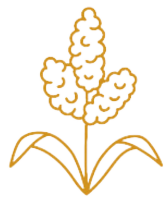 In terms of energy utilization values, sorghum grain has 3,204 kcal/kg of metabolizable energy for poultry and 3,358 kcal/kg for pigs, compared to corn, which has 3,364 kcal/kg and 3,360 kcal/kg as reported by Rostagno et al. (2017).
In terms of energy utilization values, sorghum grain has 3,204 kcal/kg of metabolizable energy for poultry and 3,358 kcal/kg for pigs, compared to corn, which has 3,364 kcal/kg and 3,360 kcal/kg as reported by Rostagno et al. (2017).

This demonstrates that sorghum is indeed an ingredient with energy potential to replace corn. The vitreous endosperm portion of sorghum is thicker compared to the floury endosperm, which is mainly composed of proteins and non-amyloidal polysaccharides, and is characterized by being dense, hard, and resistant to water penetration and enzymatic activity (Sapaterro et al., 2017).
Like the zeins in corn, sorghum contains kafirins, which are prolamins, a group of storage proteins. Of the protein content in the grain, these proteins are found in greater amounts and are stored within protein bodies that contribute to their stability and protection.

However, this protection can hinder the action of digestive enzymes, reducing the digestibility of proteins (Belton et al., 2006). Additionally, kafirins form intra- and intermolecular disulfide bonds that make their breakdown more difficult (Abdelbost et al., 2023).
 Figure 2 shows a characterization of the sorghum grain endosperm, allowing the identification of the arrangement of starch granules surrounded by prolamins, more specifically kafirins..
Figure 2 shows a characterization of the sorghum grain endosperm, allowing the identification of the arrangement of starch granules surrounded by prolamins, more specifically kafirins..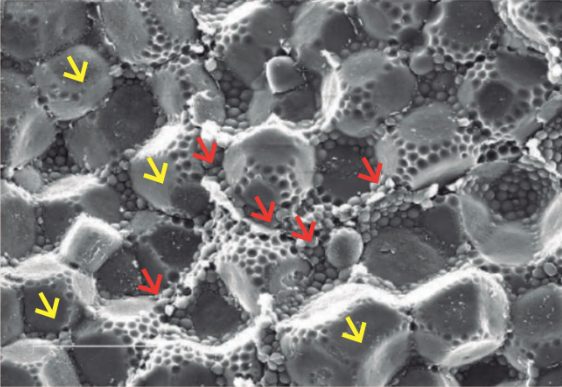
Figure 2. Electron micrograph of the endosperm showing starch granules (yellow) and prolamins (red). Source: Adapted from Black (2001).
Antinutritional Factors and Toxins
 Despite the nutritional importance of sorghum in animal feeding, the presence of antinutritional components in the grain can negatively affect the digestibility and absorption of nutrients, directly influencing animal performance and health.
Despite the nutritional importance of sorghum in animal feeding, the presence of antinutritional components in the grain can negatively affect the digestibility and absorption of nutrients, directly influencing animal performance and health.
![]() These compounds play a defensive role for the plant against birds and pathogens, as there is no physical protection of the seeds, unlike the corn husk, for example (Magalhães et al., 2001).
These compounds play a defensive role for the plant against birds and pathogens, as there is no physical protection of the seeds, unlike the corn husk, for example (Magalhães et al., 2001).
Unlike the benefits these compounds provide during the plant’s development, when included in diets for monogastric animals, they can compromise digestibility, preventing the animal from expressing its full zootechnical potential. The main antinutritional factors found in sorghum grain are phenolic compounds like tannin and phytate, cyanogenic glucosides, and flavonoids (Marques et al., 2007; Lima Júnior et al., 2010; Selle et al., 2018).
It is clear that plants absorb mineral nutrients from the soil and transmit them to the grain. However, the way these nutrients are stored often makes them indigestible to animals that do not produce specific enzymes to break the bonds present in the macromolecules of these compounds. This is the case of phosphorus, which in plants is stored in the form of phytic acid, also known as phytate. The total amount of phosphorus in the sorghum seed is 4.03 g/kg, of which 3.26 g/kg are complexed with phytate. Additionally, phytic acid can inhibit digestion by binding directly or indirectly to proteins, starch, and minerals like calcium, iron, zinc, and copper (Rooney and Pflugfelder, 1986; Liu et al., 2013; Selle et al., 2018) (Figure 3).
compounds. This is the case of phosphorus, which in plants is stored in the form of phytic acid, also known as phytate. The total amount of phosphorus in the sorghum seed is 4.03 g/kg, of which 3.26 g/kg are complexed with phytate. Additionally, phytic acid can inhibit digestion by binding directly or indirectly to proteins, starch, and minerals like calcium, iron, zinc, and copper (Rooney and Pflugfelder, 1986; Liu et al., 2013; Selle et al., 2018) (Figure 3).
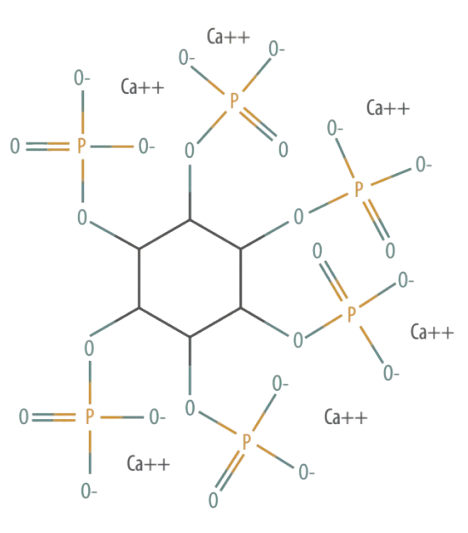
Figure 3. Structure of a phytate complexed with calcium ions (C6H6Ca6O24P6). Source: https://pubchem.ncbi.nlm.nih.gov/compound/24495
Tannins are phenolic compounds that can interact and form complexes with the reserve proteins of sorghum grain. This compound can be divided into two categories: water-soluble and condensed. Among them, the condensed tannins are the most prevalent and play a significant role in the low digestibility of sorghum (Scramin, 2013). For monogastric animals, tannins have negative effects as they form complexes with proteins, leading to a reduction in the palatability and digestibility of the grain (Pereira Filho and Rodrigues, 2015).
Sorghum grains are often contaminated by various fungi, leading to significant losses in the sanitary, physical, and nutritional aspects. During the deterioration process of these grains, these fungi have the ability to cause the degradation of crucial components such as proteins, sugars, and carbohydrates. Among the most important mycotoxins that can contaminate sorghum grains are aflatoxins, zearalenone, fumonisins, and T-2 toxin (Iamanaka et al., 2010).
crucial components such as proteins, sugars, and carbohydrates. Among the most important mycotoxins that can contaminate sorghum grains are aflatoxins, zearalenone, fumonisins, and T-2 toxin (Iamanaka et al., 2010).
It is essential to recognize that the presence and concentration of the substances mentioned can vary significantly among sorghum varieties and the cultivation  conditions to which the plant has been subjected. Proper processing procedures, such as storage and milling of the grain, have the potential to help reduce the presence of some of these toxins, thus promoting the quality and safety required for Brazilian animal nutrition.
conditions to which the plant has been subjected. Proper processing procedures, such as storage and milling of the grain, have the potential to help reduce the presence of some of these toxins, thus promoting the quality and safety required for Brazilian animal nutrition.
Utilization of Sorghum in Animal Feed
It is evident that the fluctuation in corn prices leads to considerable increases in production costs for sectors that depend on the cereal.
I![]() n this context, one option is to switch to alternative raw materials such as sorghum, which can partially replace corn (Parreira Filho et al., 2020). Hybrid strains have improved the starch composition of sorghum, resulting in improvements in grain digestibility.
n this context, one option is to switch to alternative raw materials such as sorghum, which can partially replace corn (Parreira Filho et al., 2020). Hybrid strains have improved the starch composition of sorghum, resulting in improvements in grain digestibility.
The hybrid waxy sorghum is characterized by having 100% amylopectin in its starch composition (Zardo and Lima, 1999). Additionally, there are varieties on the market that are free of tannins and phenolic compounds.
In diets for poultry and pigs, the complete substitution of maize by the tannin-free sorghum variety can only be considered. The nutritional value of sorghum grain is significant, comparable to that of maize, which is why the use of sorghum as a substitute for maize in diets for laying hens, broilers, and pigs is accepted (Fernandes et al., 2014).
significant, comparable to that of maize, which is why the use of sorghum as a substitute for maize in diets for laying hens, broilers, and pigs is accepted (Fernandes et al., 2014).
![]() However, it is important to consider the structural differences in the bonds between carbohydrate and protein sources, as well as the storage of these complexes in the sorghum grain. The substitution of maize with sorghum grain could be a promising alternative for monogastric animals. Primiparous sows, during the
However, it is important to consider the structural differences in the bonds between carbohydrate and protein sources, as well as the storage of these complexes in the sorghum grain. The substitution of maize with sorghum grain could be a promising alternative for monogastric animals. Primiparous sows, during the lactation and post-weaning phases, fed diets containing sorghum and maize, showed similar performance to those fed maize alone, indicating that the partial substitution of the grain is viable for production (Moreira et al., 2013).
lactation and post-weaning phases, fed diets containing sorghum and maize, showed similar performance to those fed maize alone, indicating that the partial substitution of the grain is viable for production (Moreira et al., 2013).
On the other hand, studies with piglets and castrated males have shown that sorghum can replace maize up to 100% in the diets without negatively affecting animal performance or nutrient digestibility (Fernandes et al., 2014).
Similarly, this substitution can be made without causing negative impacts on performance characteristics of poultry, carcass yield of broilers, and egg quality in laying hens (Assuena et al., 2008; Rocha et al., 2008). It is important to note that, like other grains, to be used in the nutrition of poultry and pigs, certain specifications are required, such as 13% moisture content, 3% crude fiber, 1.5% mineral matter, and up to 20 ppm of aflatoxin. Additionally, it should have a minimum of 7% crude protein and 2% ether extract (Compendio, 2017).
Digestibility of Sorghum
The digestibility of sorghum can vary depending on a range of factors, such as the variety of sorghum, processing methods, the presence of other components in the diet, and the target animal for the diet.
In general, it is known that sorghum has lower protein digestibility compared to other cereals such as wheat, rice, and maize. This is partly due to the presence of antinutritional factors, which can affect the digestibility of proteins and other nutrients (Marques et al., 2007). 
Additionally, the low digestibility of kafirin proteins may also contribute to the reduced digestibility (Belton et al., 2006).
In the glassy endosperm, the granules are smaller, and the matrix is more continuous (Paes, 2006). The characterization of sorghum proteins may hinder access to the starch granules, thus reducing their digestibility.

It is important to note that the digestibility of sorghum can be optimized through processing methods such as milling and thermal treatments. The reduction in particle size resulting from milling has a positive impact on nutrient digestibility and animal performance (Leandro et al., 2001).
![]() Cooking, for example, can improve protein digestibility in sorghum by inactivating anti-nutritional factors, promoting the breakdown of the protein body, and enhancing protein solubility (Nunes, 2000; Margier et al., 2018), as well as improving starch digestibility by gelatinizing the granule. Supplementing diets containing sorghum with enzymes is also a tool to improve nutrient digestibility in the diet (Leite et al., 2011) and mitigate the effects of the compounds present in the grain (Zanella, 1999; Barbosa et al., 2008). The use of xylanases, cellulases, and glucanases can improve grain digestion and also enhance the animal performance, such as feed conversion in broiler chickens during the initial growing phase (Leite et al., 2011). Additionally, hybrid grains have been developed to increase nutrient digestibility (Marques, 2007).
Cooking, for example, can improve protein digestibility in sorghum by inactivating anti-nutritional factors, promoting the breakdown of the protein body, and enhancing protein solubility (Nunes, 2000; Margier et al., 2018), as well as improving starch digestibility by gelatinizing the granule. Supplementing diets containing sorghum with enzymes is also a tool to improve nutrient digestibility in the diet (Leite et al., 2011) and mitigate the effects of the compounds present in the grain (Zanella, 1999; Barbosa et al., 2008). The use of xylanases, cellulases, and glucanases can improve grain digestion and also enhance the animal performance, such as feed conversion in broiler chickens during the initial growing phase (Leite et al., 2011). Additionally, hybrid grains have been developed to increase nutrient digestibility (Marques, 2007).
Final Considerations
This material has explored several points related to the use of sorghum in animal feed, from its ![]() morphological characteristics and nutritional composition to its digestibility and use in monogastric animals. By examining the digestibility of sorghum, it is possible to understand its viability as an energy and nutrient source for pigs and poultry.
morphological characteristics and nutritional composition to its digestibility and use in monogastric animals. By examining the digestibility of sorghum, it is possible to understand its viability as an energy and nutrient source for pigs and poultry.
Moreover, the use of sorghum in animal feed offers economic and environmental advantages, providing a cost-effective alternative to corn, especially in regions where corn cultivation may be challenging.
However, it is crucial to consider the factors of poor quality and the toxins present in the grain, which can negatively affect the health and performance of animals. Mitigation strategies, such as selecting sorghum varieties with lower levels of these compounds, using appropriate processing techniques, and adding additives, are essential to ensure the safe and effective use of the grain.
